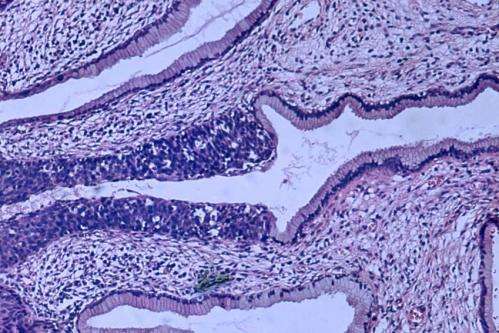High-risk HPV linked to improved survival in cervical cancer

The presence of the human high-risk papillomavirus (hrHPV) in the diagnosis of invasive cervical cancer is linked to a greatly improved prognosis compared to cases in which hrHPV cannot be identified in the tumour, according to researchers at Karolinska Institutet in Sweden, who have published their results in the scientific journal PLOS Medicine. The researchers believe that high-risk HPV can be another important prognostic marker that can inform the choice of therapeutic strategy.
High-risk human papillomavirus (hrHPV) is the leading cause of cervical cancer. However, whether the presence of hrHPV in the tumour tissue is of significance to the prognosis has been unclear. In this present study, researchers at Karolinska Institutet have therefore looked into a possible correlation between the presence of hrHPV in the tumour and survival rates for invasive cervical cancer (i.e. cervical cancer that has spread to surrounding tissues).
The researchers gathered information on all cases of invasive cervical cancer in Sweden between the years 2002 and 2011 (4,254 confirmed cases in total). They then collected HPV data from the regional biobanks for 2,845 of these women and compared survival data from national registers.
Their results show that the five-year relative survival rate for women with hrHPV-positive tumours was 74 per cent compared with the female population of the same age and during the same calendar year, while it was only 54 per cent for women with hrHPV-negative tumours.
HrHPV could be identified in just over 80 per cent of the tumours. Women with hrHPV-positive tumours were more likely to be discovered through screening, were younger and had a high socioeconomic status. They were also discovered at an earlier clinical stage than women with hrHPV-negative tumours. After having controlled for age, tumour type, tumour stage at diagnosis and educational background, the researchers found, however, that women with hrHPV-positive tumours still had a much lower risk of dying than the women with hrHPV-negative tumours.
"The presence of hrHPV in invasive tumour tissue is thus a strong and yet routinely accessible prognostic biomarker for the prognosis of invasive cervical cancer and could be a useful complement to the established prognostic tools currently in use," says co-author Pär Sparén, professor at the Department of Medical Epidemiology and Biostatistics, Karolinska Institutet.
The underlying biological mechanisms for why the lack of detectable hrHPV in the tumour gives a much worse prognosis are unknown and need to be interrogated further.
More information: Jiayao Lei et al. High-risk human papillomavirus status and prognosis in invasive cervical cancer: A nationwide cohort study, PLOS Medicine (2018). DOI: 10.1371/journal.pmed.1002666




















